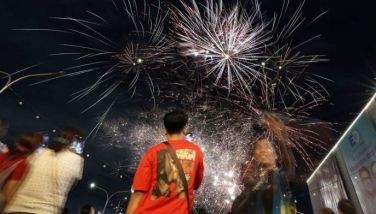Not Sinulog but Sinug for a true-blue Cebuano
CEBU, Philippines - It is time once again to celebrate the feast of our dear Sto. Niño. It cannot be denied that the Fiesta Señor is one of the biggest crowd drawers in Cebu and the Philippines, attracting local and foreign tourists and bringing in good business for Cebu. Our hotels, the transportation sector and even small time vendors, enterprising Filipinos who make a living out of selling Sto. Niño images, candles and other memorabilia, all benefit from the celebration.
But before we get so wrapped up in the revelry, I would like to remind everyone, locals and visitors alike, that the center of all the festivities is the Señor Sto. Niño.
It is very sad to note that because of too much commercialization, many people tend to forget the reason for the celebration. People get too excited about the Sinulog grand parade that they forget the religious aspect of the celebration.
As a lumad Cebuano, I also feel the need to correct an error that has been committed over and over for the past years that Cebu has celebrated the feast of the Sto. Niño.
It is not Sinulog, but SINUG.
I have a very strong devotion to the Señor Santo Niño, being one of the sacristans at the Basilica during the Japanese occupation. Back then, devotees of the Holy Child already practiced the SINUG, a dance offering to thank the Señor Sto. Niño for favors He has bestowed or a prayer asking for His help and assistance.
The feast of the Holy Child came to be known as the Sinulog festival only in the 1980s when David “Boy” Odilao, with the help of then Cebu City Mayor Florentino Solon, collaborated with the different schools and universities in the city.
A true-blooded Cebuano should know that there is an ocean of difference between SINUG and SINULOG.
The SINUG steps consisted of one step forward and two steps backward while holding candles that are not lighted. I remember that the original SINUG dancers who performed during the annual Señor Sto. Niño procession were young boys from the San Nicolas District who carried sticks as they danced to the beat of a drum.
The dance sequence in the SINULOG has already deviated from the original SINUG. This is probably because the steps were copied from the steps performed by a group of Manila dancers who had no idea what the real SINUG means.
More importantly, the SINUG dancers did not carry the image of the Sto. Niño while dancing. The Sto. Niño should be placed in the altar to be worshipped and prayed to. Using the image of the Sto. Niño while dancing might give people from other religions that wrong impression that we are practicing idolatry. It really pains me to see SINULOG dancers carrying the Sto. Niño with their bare hands while moving up and down, swinging to the left or right or even twirling in circles.
Already, many of those who practiced the original SINUG have noticed the difference in today’s celebration of the Fiesta Señor. Just last week, Estelita “Titang” Diola, the oldest SINUG dancer, who is also considered as the keeper of the original drum beat of the dance, lamented in an interview over ABS-CBN that their fears before of the fiesta becoming too commercialized has already happened. She went on to say in that interview that what was supposed to be a dance offering has now become a mockery.
As a Cebuano, I feel the need to correct the wrong practices that have been accepted as if these were really how we do things. I hope that my small contribution would get the attention of Sinulog committee so that these errors can be corrected.
Let us all remember that the ultimate reason for this celebration is the Señor Sto. Niño, He who has protected our dear Cebu from calamities and has shielded us, Cebuanos, from pain and anguish with His caring hands.
Viva Pit Señor! (FREEMAN)
- Latest
- Trending























